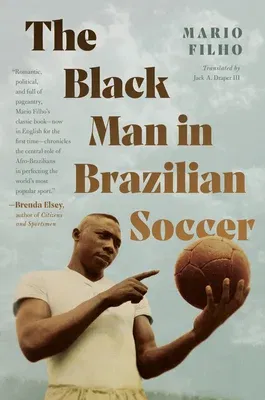Mario Filho
(Author)The Black Man in Brazilian SoccerPaperback, 12 April 2021

Qty
1
Turbo
Ships in 2 - 3 days
In Stock
Free Delivery
Cash on Delivery
15 Days
Free Returns
Secure Checkout
Part of Series
Latin America in Translation/En Traducción/Em Tradução
Print Length
368 pages
Language
English
Publisher
University of North Carolina Press
Date Published
12 Apr 2021
ISBN-10
1469637006
ISBN-13
9781469637006
Description
Product Details
Author:
Book Format:
Paperback
Country of Origin:
US
Date Published:
12 April 2021
Dimensions:
23.39 x
15.6 x
2.08 cm
ISBN-10:
1469637006
ISBN-13:
9781469637006
Language:
English
Location:
Chapel Hill
Pages:
368
Publisher:
Weight:
562.45 gm

